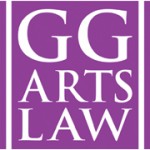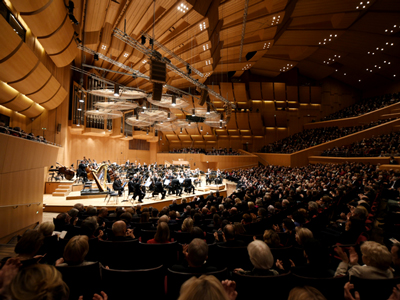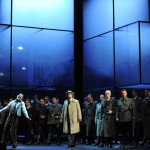By Brian Taylor Goldstein, Esq.
Dear Law and Disorder:
We are a small non-profit that runs a performing arts center. In up dating our by-laws, its been recommended that we establish term limits for our directors and officers, as well as a formal nominating committee. Do we really need such formalities? We’re very small and don’t have any other committees. Can’t the board itself select its own members and officers? And it seems a mistake to force directors to leave when they are willing to continue to serve on our board. What do you recommend to your clients?
While I am a strong advocate of fixed terms, I never recommend term limits for board members. Why? Because among the most challenging aspects of running a successful non-profit is finding and keeping healthy board members who, whether through wealth, work, or wisdom (or a rare combination of all three), contribute to the success and productivity of the organization. Once you are lucky enough to find then, the last thing you want to do is force them to leave! However, at the same time, you need to have a mechanism through which malignant board members can be removed. Such members, if left to metastasize, can quickly chase all the healthy ones away, burn out the staff, and poison the entire operation. Fixed terms without term limits provide you with the best of both worlds.
Let’s say, for example, that the by-laws provide that each board member serves a term of 2 years. At the end of each board member’s term, the nominating committee is required to review the board member and recommend either that the board member be invited to serve another term or be invited to exit. By having terms, but no term limits, there is no limit to how many terms a board member can serve, but there is also a fixed time after which every board member’s service can be reviewed. While you can pick any term length you want, I usually recommend no longer than 2 – 3 year terms for board membership. (Anything longer and you start losing the effectiveness of early detection and prevention!) There are also ways to stagger terms so that not everyone on the board is up for renewal at the same time.
Term limits for officers, on the other hand, can be more appropriate. Why? Because with no term limit, even a beloved president or board chair can quickly become a feared dictator that no one wants to cross, or, just as worse, a benevolent, but ineffective leader who spurns all attempts at growth or change. At the end of the president’s term, he or she can still serve on the board, but no longer gets to wield the mace of supreme authority. Also, in my experience, I have also found that the people you most want to serve as board president or chair will be those who do not want to serve more than a year whereas those you want to avoid are those who are looking for a life-time appointment.
As for whether or not you need to have a formal nominating committee, its a recommended practice to have the formality of a separate nominating committee—if not at first, then certainly as your board gets bigger. The nominating committee does not make the actual decisions, but, rather, makes recommendations to the board of whether or not to ask existing board members to renew their terms, as well as reviews and makes recommendations for the nomination of new board members. While the board is always able to accept or decline such recommendations, having a nominating committee allows a forum for such discussions to be “hashed out” other than in a full board meeting. This has the advantage of avoiding potentially awkward situations. First, imagine a scenario where a board member has nominated a “close friend” to serve on the board, but who may not be a good choice for the board. Having such a frank discussion is easier “in committee” than in the presence of the board member. Similarly, when reviewing the renewal of existing board members, its usually easier to have a more open and honest assessment, including key staff input, without having the entire board present. Like all committee work, its also a more efficient use of the board’s time to have committees make recommendations and reports rather than bog down the entire board with every decision. Lastly, a separate nominating committee can potentially prevent a small board from evolving into a dictatorship where only a few members dominate everything.
By-laws, like strategic plans and business plans, are not commandments fixed in stone, but, rather, should be approached as living, breathing, and malleable tools that provide structure as well as flexibility. When thinking of by-laws, you not only need to think of current operations, but creating mechanisms for growth. Even though your board may now be small, you want think big. Similarly, even though your board may currently be one big happy family, you want to think of the future when, like all families, everyone inevitably starts to get one everyone else’s nerves.
_________________________________________________________________
For additional information and resources on this and other  legal and business issues for the performing arts, visit ggartslaw.com
legal and business issues for the performing arts, visit ggartslaw.com
To ask your own question, write to lawanddisorder@musicalamerica.org.
All questions on any topic related to legal and business issues will be welcome. However, please post only general questions or hypotheticals. GG Arts Law reserves the right to alter, edit or, amend questions to focus on specific issues or to avoid names, circumstances, or any information that could be used to identify or embarrass a specific individual or organization. All questions will be posted anonymously.
__________________________________________________________________
THE OFFICIAL DISCLAIMER:
THIS IS NOT LEGAL ADVICE!
The purpose of this blog is to provide general advice and guidance, not legal advice. Please consult with an attorney familiar with your specific circumstances, facts, challenges, medications, psychiatric disorders, past-lives, karmic debt, and anything else that may impact your situation before drawing any conclusions, deciding upon a course of action, sending a nasty email, filing a lawsuit, or doing anything rash!


